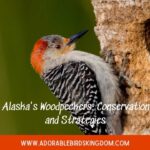If you’re like me, you’re fascinated by the vibrant, fluttering hummingbirds. These tiny powerhouses are a captivating spectacle, especially when they make their way to North Dakota. It’s true, folks! North Dakota may not be the first place you’d expect to see hummingbirds, but they’re there, adding a dash of color to the prairie landscape.
You may be wondering, “What brings these feathery dynamos to the Peace Garden State?” Well, it’s all about migration. Hummingbirds are tireless travelers, and North Dakota happens to be on their route. So, if you’re in North Dakota and you haven’t spotted a hummingbird yet, don’t lose hope. They’re around, and I’m here to help you know more about these fascinating creatures in the context of North Dakota.
Hummingbirds: The Tiny Wonders of Nature
Hummingbirds, by their very nature, have always held an alluring appeal for nature-enthusiasts and the casual observer alike. Their vivacious colors, fluttering wings, and intoxicating dance in the air have made these diminutive creatures a marvel to behold; a true testament to nature’s splendor. North Dakota, enriched by the diverse migratory patterns of these winged wonders, serves as an excellent backdrop for one to unravel the mysteries of these delicate creatures.
Hummingbirds are unique and no other bird can claim an identical list of attributes. Their wings oscillate between 50 and 200 times per second, a remarkable feat indeed. But the fascination doesn’t stop there. These birds are also known for their uncanny ability to hover in mid-air. No other bird species can lay claim to this peculiar ability, setting hummingbirds in a league of their own.
North Dakota’s geographical positioning creates an interesting dichotomy. This midwestern U.S. state offers a blend of terrain types, creating a unique environment that facilitates the hummingbird’s migration patterns. The state’s location, complementary weather conditions, and abundant food sources present an ideal blend for these tiny marvels to flourish.
In exploration of North Dakota, you can spot three types of hummingbirds:
- Ruby-Throated Hummingbird
- Rufous Hummingbird
- Calliope Hummingbird
While the Ruby-Throated Hummingbird remains the most common, the Rufous and Calliope are rarer and often a welcome sight for avid birdwatchers.
To appreciate these remarkable beings, we need to delve deeper into their existence, their migration habits, and their role in the ecosystem of North Dakota. Let’s look closer into the life of these hummingbirds in North Dakota and marvel at the intricate workings of nature.
Migration Patterns of Hummingbirds
As we delve deeper into the lives of these remarkable creatures, it’s vital to comprehend their migratory patterns. As tiny as hummingbirds are, it’s incredible that they undertake long-distance voyages every year, crossing hundreds, even thousands, of miles at times to reach their desired destinations.
Taking into consideration these tiny aviators, the three prominent species found in North Dakota – the Ruby-Throated, Rufous, and Calliope Hummingbirds – each follow distinct migration routes. Their journeys are shaped by ecological pressures and weather conditions, providing a unique glimpse into their adaptability and resilience.
Typically, Ruby-Throated Hummingbirds tread the path from Central America to North Dakota around late spring, a journey of over 2,000 miles that demands exceptional endurance. On the other hand, the Rufous Hummingbirds bask in the Alaskan summers and travel down to Mexico in winters, using North Dakota as a transit hub. They’re known for their long-distanced migrations, among the longest in the world of birds proportionate to their size. Lastly, the Calliope Hummingbirds, considered the smallest bird species in North America, mainly breed in the Northwestern region but have been occasionally spotted in North Dakota during migration.
Below is a brief representation of their respective migratory paths:
| Hummingbird Species | Spring Arrival in North Dakota | Fall Departure | Total Migration Distance |
| — | — | — |
| Ruby-Throated | Late May | Early September | 2000+ miles |
| Rufous | Mid-June | Mid-August | 3000+ miles |
| Calliope | Rare, but usually Early June | Early August | Data not available |
Understanding the migration patterns enhances appreciation for their tenacity. Despite being minute, these creatures exemplify the saying that ‘size is not a measure of strength’. Their journeys are indeed a testament to the marvels of nature, showing what little creatures are capable of achieving.
As we continue exploring the world of hummingbirds in North Dakota, let’s turn our attention to an equally intriguing aspect – their impressive hovering skills and speedy wing-flaps.
Surprising Presence in North Dakota
One may not typically think of North Dakota when it comes to hummingbirds but believe it or not, North Dakota is a crucial stop for these diminutive dynamos during their yearly migrations. Let’s delve into how and why this region is so important to hummingbirds headed to their breeding or wintering grounds.
I’ve noticed that hummingbirds have an especially challenging task of surviving as they pass through North Dakota because of the state’s often harsh, fluctuating climates. It’s interesting to note though, these small birds have built up a resilience that’s truly impressive. Weather challenges, in fact, make them tougher, better equipped to face the elements on their journey. Climate adaptation ability in hummingbirds is truly a testament to their strength and survival instincts.
Moreover, in this region of the United States, you’ll find an abundance of flowering plants that hummingbirds favor for their diet includes primarily nectar from flowers and small insects. Couple this with the availability of adequate shelter, and North Dakota becomes an appealing transit spot that allows these birds to feed, rest, and refuel before they continue their journey.
Even between the challenging flights and bouts of weather, North Dakota provides a chance for these winged wonders to showcase their standout features in the wild. This includes their hovering skills and rapid wing-flaps, which are unparalleled in the bird kingdom. No doubt, the sight of an industrious hummingbird, resplendently colorful, unconcerned with the vast landscape of North Dakota unfolding around it, is a sight to behold.
All this makes North Dakota an unexpected yet fitting pit stop for the diminutive hummingbirds. And the lack of massive city trappings also means there’s very little pollution, contributing to the state’s appeal for these long-distance fliers.
One thing to keep in mind as I proceed with my study of these hummingbirds – every region, every state has its own story to tell, its unique geography and climate to offer. It only goes to show, nothing in nature is ever truly mundane or ordinary.
Let’s dive a little deeper into the specifics of their awe-inspiring hovering techniques and rapid wing-flapping abilities in our next chapter.
Best Places to Spot Hummingbirds in North Dakota
North Dakota’s verdant landscapes harbor unique hotspots for hummingbird sightings, a manifestation of the state’s rich biodiversity. If you’re eager to spot these tiny aviators, some areas stand out for their frequent hummingbird activity.
One such phenomenon is Theodore Roosevelt National Park, a rustic gem in North Dakota noted for unique geological formations and abundant wildlife. Throughout the summer months, it’s common to spot Ruby-throated Hummingbirds hovering around the park’s thick vegetation, particularly near the park’s entrance. Their distinctive red throat glimmers in the sunlight, offering a beautiful spectacle for visitors.
Another hummingbird hub you won’t want to miss is Fort Mandan Overlook. It’s located along the Lewis and Clark trail and offers a panorama of the Missouri River’s natural beauty. Part of the hummingbird attraction here is the spread of wildflowers near the water, providing an endless supply of nectar for these tiny fliers.
If city spotting is more your style, Fargo is the spot to be. The city’s urban parks, particularly Lindenwood and Island parks, are hummingbird hotspots. With their versatile landscapes full of nectar-rich flowers, these parks act as miniature hummingbird sanctuaries right in the heart of the city.
North Dakota’s beautiful nature parks aren’t the only places you’ll spot these picturesque creatures. Rural areas and backyards have also reported sightings, showing the adaptability of hummingbirds to different habitats. Their presence is a natural validation of North Dakota’s healthy environment, a place where wildlife thrives despite challenging conditions.
To be part of this magical experience, remember it’s vital to respect these tiny miracles of nature. Watch from a distance, and do your bit to preserve their habitat through responsible tourism practices. Small actions will ensure that future generations get to marvel at these hovering wonders, adding color and excitement to North Dakota’s landscapes.
How to Attract Hummingbirds to Your Yard
So, you’ve read about the hummingbirds in North Dakota’s lush parks and urban spaces, and you’re probably wondering,
“How can I bring these fluttering wonders closer to my home?” Indeed, turning your yard into a hummingbird haven isn’t as complicated as some might assume. Here’s a starter guide full of tips that are sure to attract hummingbirds right to your backyard.
Flowers are Key
Hummingbirds are primarily attracted to nectar-rich flowers. So, growing plants like bee balm, canna, columbine, and daylilies can be like ringing a dinner bell for these tiny fliers. Think of your garden as a buffet, displaying a colorful array of blossoms, particularly in shades of red and orange. With these vibrant colors, you’ll see hummingbirds flitting about your backyard in no time.
Provide Some Nectar
A hummingbird feeder filled with homemade nectar can attract numerous visitors. Whipping up your own batch is easy: just mix one part white granulated sugar with four parts water. Ensure to change the nectar and wash the feeders every few days during warm weather to prevent mold and fermentation.
Offer Nesting Material
Hummingbirds will be more inclined to stay if they find suitable nesting materials. Providing items like fine cotton threads, dryer lint, or woven plant fibers can encourage these feathered friends to set up a home base on your property.
This is how you encourage hummingbird visits to your backyard. Remember that it should never just be about personal enjoyment. It’s also about promoting an environment that supports the hummingbirds’ survival. North Dakota’s wildlife thrives thanks to a balance between human intervention and letting nature take its course. Let’s do our part in ensuring the cycle continues.
Conclusion
I’ve shown you how to transform your North Dakota backyard into a hummingbird haven. With nectar-rich plants and homemade feeders, you can invite these tiny wonders to your space. It’s a joy to watch them flutter about, but remember, it’s not just about enjoyment. It’s a small step towards supporting their survival. As we’ve seen, human intervention can work in harmony with nature, helping to keep North Dakota’s wildlife diverse and thriving. So let’s do our part, roll up our sleeves, and welcome the hummingbirds to our homes. They might be small, but their presence has a big impact.



